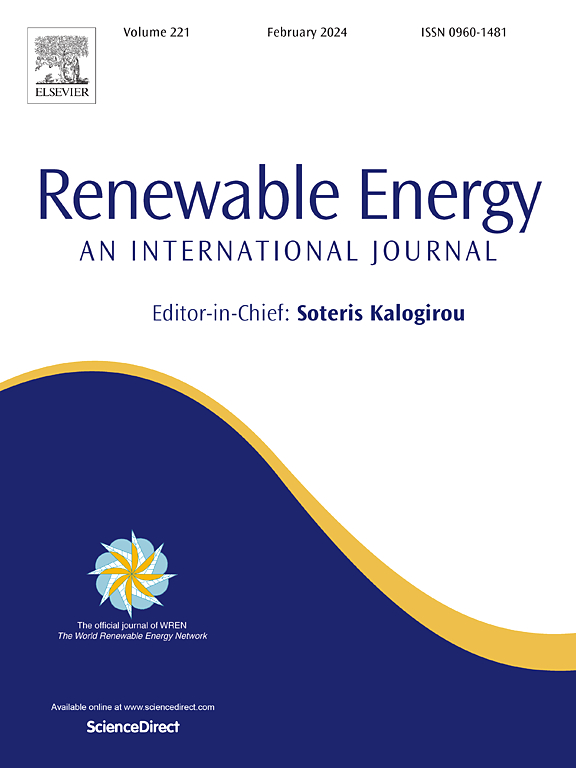Performance assessment of bifacial and monofacial PV systems on different types of soils in a low-latitude site
IF 9
1区 工程技术
Q1 ENERGY & FUELS
引用次数: 0
Abstract
This paper presents the performance assessment of bifacial and monofacial photovoltaic systems on different types of soils in a low-latitude site (light sand, white gravel, and dark gravel). The PV Solar Plant includes a bifacial PV system with a nominal power of 6.36 kWp and a monofacial PV system with a nominal power of 5.52 kWp. The PV Solar Plant is located at the Federal University of Santa Catarina (UFSC) in Araranguá/SC, southern Brazil. Performance analysis utilizes measured data obtained from the PV Solar Plant's monitoring platform and the meteorological station database of the National Institute of Meteorology (INMET). The study period covers February 2023 to January 2024. Meteorological parameters such as global horizontal solar irradiation, in-plane irradiation, reference yield, and clearness index were determined using data from the INMET and software tools such asRADIASOL, SAM, and Bifacial Radiance to calculate front and rear irradiation. Electrical measurements from the PV Solar Plant provided insights into PV array energy yield, final system yield, performance ratio, and bifacial gain of the photovoltaic systems. The results indicate that the bifacial PV system outperformed the monofacial PV system in terms of energy performance. The annual average bifacial gain (BG) on different types of soil was 8.42 %, 5.92 %, and 4.53 % for light sand, white gravel, and dark gravel, respectively. The values of the annual average performance ratio were between 74.3 % and 76.8 %. The values of the average bifacial performance ratio values were between 72.2 % and 73.7 %. The final system yield values of the monofacial PV systems ranged between 1187.12 and 1227.96 kWh/kW, whereas for the bifacial PV systems, they ranged between 1240.91 and 1300.70 kWh/kW. This study underscores the superior performance of bifacial photovoltaic systems and their sensitivity to soil albedo variations.
求助全文
约1分钟内获得全文
求助全文
来源期刊

Renewable Energy
工程技术-能源与燃料
CiteScore
18.40
自引率
9.20%
发文量
1955
审稿时长
6.6 months
期刊介绍:
Renewable Energy journal is dedicated to advancing knowledge and disseminating insights on various topics and technologies within renewable energy systems and components. Our mission is to support researchers, engineers, economists, manufacturers, NGOs, associations, and societies in staying updated on new developments in their respective fields and applying alternative energy solutions to current practices.
As an international, multidisciplinary journal in renewable energy engineering and research, we strive to be a premier peer-reviewed platform and a trusted source of original research and reviews in the field of renewable energy. Join us in our endeavor to drive innovation and progress in sustainable energy solutions.
 求助内容:
求助内容: 应助结果提醒方式:
应助结果提醒方式:


